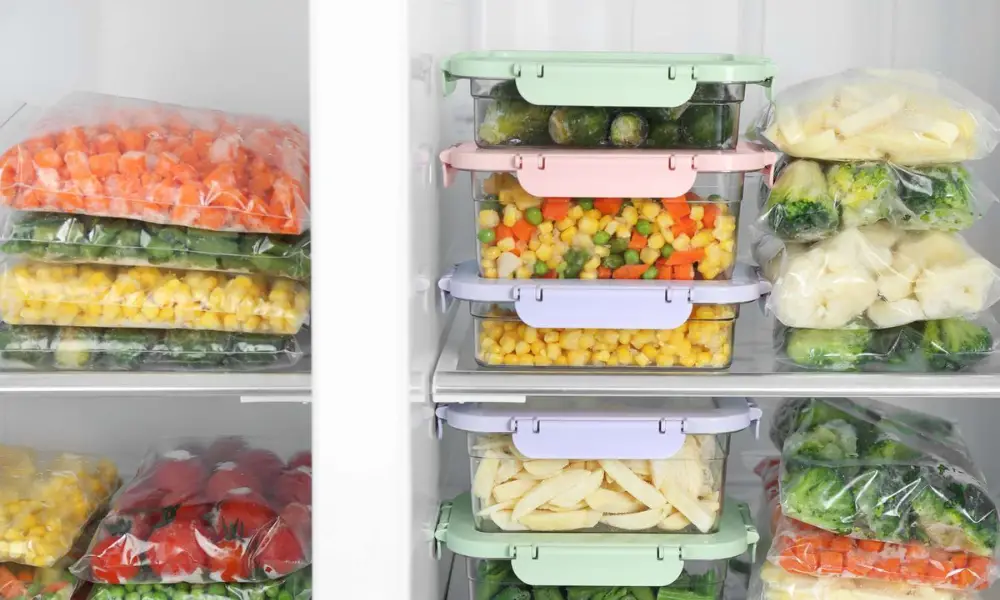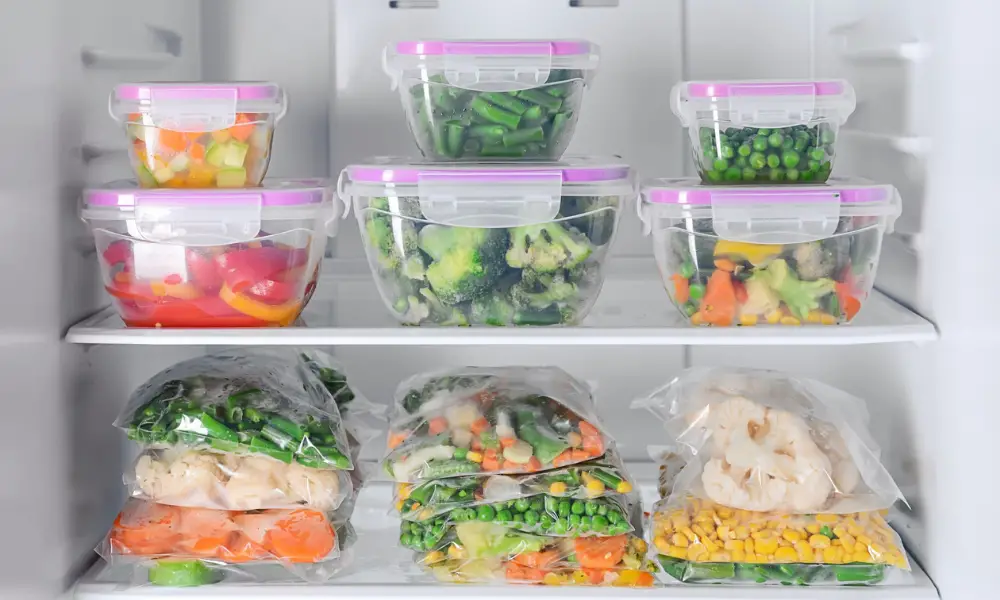The trusty kitchen appliances are freezers. You can always rely on drowsily stumbling into the kitchen and browsing your dependable freezer to satisfy your midnight food appetite. Your freezer is the go-to location for last-minute food, offering anything from frozen fruits, veggies, and meat to pizzas ready to bake and decadent ice cream. What happens, though, if your freezer isn’t freezing?
Don’t let it get you down if your freezer stops doing the one thing it was designed to do—freeze. It might quickly return to keeping your goods extremely cold with a few straightforward repairs. Review this helpful guide created on common freezer problems and fast repairs.

Why is my Freezer Not Freezing?
It’s unnecessary to throw hundreds of dollars down the drain because the freezer broke. Even the most peaceful person might become agitated by a freezer that isn’t freezing. The first step in restoring a freezer that has stopped freezing is to identify the cause—saving your freezer and your money.
Freezer Air is Getting Away
If your freezer is cold but not yet frozen, you should first test the freezer door. Your freezer may lose valuable cold air because you failed to notice something sticking out far enough to keep the door ajar.
Similarly, outdated or improperly built freezer door seals may reduce freezer temperature. Placing a piece of paper or a dollar bill between the freezer and the door will allow you to test the seals on your freezer doors. After that, shut the freezer door. If you can remove a dollar bill, your freezer door sealer must be fixed or replaced.
The Contents of the Freezer Block the Evaporator Fan
Poor packing of the contents of your freezer may also be to blame for its malfunction. Ensure the evaporator fan, which is often located in the back of the freezer, has enough room under it so that the cold air it emits can circulate throughout the freezer.
Dirty Condenser Coils
Because filthy coils cause the condenser to store heat rather than release it, your freezer’s overall cooling capability may be reduced. The compressor overcompensates as a result of this. Make sure to routinely clean your condenser coils to avoid this from occurring.
The Evaporator Fan is Not Working
Faulty internal components can cause your freezer to not freeze for more significant causes. If your refrigerator’s evaporator fan isn’t functioning properly, unplug it before removing and cleaning the evaporator fan blades. Your freezer’s evaporator fan blades can become clogged with ice and stop effectively circulating air. You must replace a bent fan blade if you notice one.
You may need to replace a bad motor or fix frayed wires that connect the fan motor and thermostat control if the evaporator fan blades are freely spinning, but the fan won’t operate.
A Bad Start Relay Occurred
Last but not least, a non-freezing freezer could indicate that your starter relay is malfunctioning, failing to supply electricity to your compressor. By unplugging your refrigerator, opening the compartment under your freezer, taking the start relay out of the compressor, and shaking the start relay, you can do a physical test on your start relay. Your start relay has to be changed if you hear what sounds like dice in a can rattling. If it does not rattle, that might mean that you have a compressor issue that requires professional repair assistance.
What are the Tips for Freezer Maintenance?
A freezer that stays cool is a content freezer. Here are several tried-and-true methods to enjoy continuous cooling, maintain the house’s coldest appliance as cold as possible, and properly prepare food for storage.
- To find out how to perform maintenance, consult the owner’s manual. Knowing your freezer inside and out will go a long way toward keeping you calm when the time comes to maintain or repair it.
- Regularly check the thermostat in the freezer. A freezer’s thermostat must be set to zero degrees Fahrenheit for best performance (-18 degrees Celsius). Use a thermometer to check the temperature if your model lacks a built-in thermostat.
- Maintain interior cleanliness. You can quickly make your freezer sparkle with a moist rag and some dish soap.
The better you treat your freezer, like with anything you rely on daily, the better it will treat you (and your food).
The refrigerator and freezer are included in the home systems, and an American Home Shield home warranty covers appliances. A home warranty plan with refrigerator warranty coverage is a smart idea to purchase as well. Check out our pricing and plans right away to make sure your budget is shielded from problems brought on by everyday wear and tear, such as your freezer failing to freeze.
What are a Few Typical Freezer Issues?
It’s not always bad if a freezer doesn’t reach its frozen potential. In truth, many problems with your freezer that aren’t working can be fixed with basic troubleshooting. Take a moment to calm down, identify the problem, and resolve it before getting into a freezer fluster.
The Freezer Runs Constantly
There are several reasons why a freezer could operate nonstop. The freezer runs nonstop to maintain the proper temperature because the thermostat controlling the temperature is malfunctioning. If so, you might try resetting the thermostat or changing it out entirely.
Another explanation is that the condenser or evaporator fan motor is broken. It’s probably time to call a specialist if this is the problem.
The Freezer is Making an Odd Noise
Your freezer will likely make a lot of noise while regularly operating. For instance, if your freezer sounds like popping popcorn, the interior walls are likely expanding and contracting due to temperature changes. Additionally, common noises that indicate the functionality of your refrigerator and freezer include buzzing, humming, gurgling, and clicking.
Leaking from the Freezer
You most likely have a blocked or (ironically) frozen defrost drain if your freezer is dripping water or if it has frost on it. You can unclog it by using a turkey baster filled with hot water to clear up the drain tube.
What are the Different Types of Freezers?
There are three freezers on the market: upright, chest, and refrigerator-freezer combos. There are manual-defrost or frost-free varieties of the upright and refrigerator freezer. Manual-defrost freezers are more economical even though they are less handy.
Although frost-free chest freezers are not available, they are less prone to frost buildup. Because they don’t have a fan running to remove the moisture that would turn to frost, they keep greater quality food than frostless models. Food that has been inadequately wrapped in the freezer may develop freezer burn as a result of the continual removal of moisture.
Upright Freezers: These devices resemble residential refrigerators in terms of overall design and appearance. They have one or two exterior doors and three to seven food storage shelves. These freezers are popular because they are practical, take up little floor space, and are simple to load and unload the food. Every time the door is opened, more chilly air escapes.
Chest Freezers: Compared to upright freezers, chest freezers demand more floor space but are more affordable to buy and run. Make sure this freezer has sliding or lift-out baskets to load and remove food easily. Every time these freezers are opened, less cold air is lost.
Both frozen and chilled meals can be stored in separate compartments. A refrigerator-freezer combination has one or two doors and is a single appliance. The freezer chambers could be above, below, or to one side of the refrigerator. Make sure the freezer is a true freezer (will sustain 0 °F or less) before choosing this type so that it isn’t just a freezing compartment.
What Distinctions Exist Between a Freezer and a Refrigerator?
The majority of refrigerators have an associated freezer that is housed in a separate section. The temperature in the refrigerator section is closer to 40 F than the required deep freezer temperature of roughly 0 F (-18 C) (4 C). The compartments are divided by a vent aperture to preserve this temperature differential, and a fan only blows cool air from the freezer into the refrigerator when required.
When the refrigerator is too warm or cold, but the freezer is at the right temperature, and the door seals and insulation are in good condition, the cause is typically a broken fan. By altering the fan’s speed, you may control the temperature in the refrigerator compartment. However, if the freezer temperature is higher than it should be, the condenser is usually to blame, which is a more serious issue.
Additionally, experiments are carried out to verify the outcomes anticipated by the current computational model. The results of the computational and experimental methods are qualitatively in accord with one another. However, some differences can be seen in the precise numerical values acquired.
While the computed temperatures for the refrigerator compartment are lower than the equivalent experimental findings, they are slightly higher than the experimental ones for the freezer chamber. Lack of precise data on airflow rates and unexplained heat transfer rates through door gaskets and the compressor may be to blame for the discrepancy between experimental and computational results.
Can you Maintain your Freezer on your Own?
If you know what you’re doing, you can frequently fix the fan or the controls yourself when something goes wrong in a refrigerator. The situation changes when you can’t keep the freezer at the desired temperature because that typically indicates a problem with the refrigeration system. Unlicensed individuals are not allowed to service refrigeration systems according to federal legislation.
The refrigerant’s volatility is one of the key justifications for the ban. Some older systems may still use Freon, also known as R22 refrigerant, even though it is no longer in use because it is a chlorofluorocarbon and harms the Earth’s ozone layer.
In addition, certain modern refrigerants, such as hydrofluorocarbons (HFCs), might damage the environment by accelerating global warming.
Ammonia is still a refrigerant in some freezer systems, especially propane ones, which is a throwback to the first refrigeration systems. Ammonia is extremely corrosive, lethal in big doses, and burns the eyes and respiratory system. Working on refrigeration systems without releasing these dangerous gases requires highly trained technicians and stringent safety procedures.
Conclusion
Having evaporator coils frozen inside the freezer can be a frustrating situation. This type of problem can occur for several reasons. If your system is experiencing this problem, it is important to know the causes before attempting to repair it.
Depending on the model of refrigerator or freezer you own, you may be experiencing problems with the temperature control. It is a complex device and requires some knowledge to understand its function. In short, it is a thermostat that controls the temperature inside your fridge or freezer.

